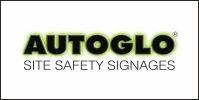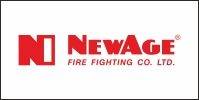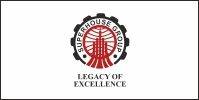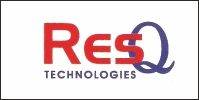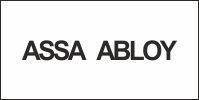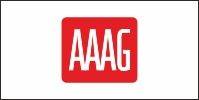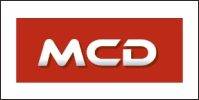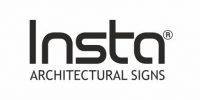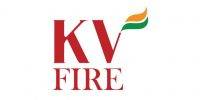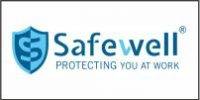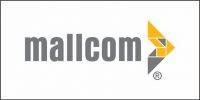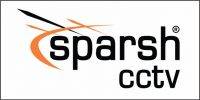 By incorporating industrial hygiene principles early in the planning process and being able to recognize potential issues before they escalate, you will help ensure the health and safety of your workers and manage your company’s exposure to potential risk and liability.
By incorporating industrial hygiene principles early in the planning process and being able to recognize potential issues before they escalate, you will help ensure the health and safety of your workers and manage your company’s exposure to potential risk and liability.
Organizations are responsible for the overall health and safety of the workers they employ, from warehouse workers to the executive suite at their desks. Keeping employees safe and healthy requires knowledge of industrial hygiene, which is the science dedicated to the anticipation, recognition, evaluation, communication, and control of environmental stressors in the workplace that may result in injury, illness, impairment, or otherwise affect the wellbeing of workers and community members.
Because industrial hygienists are trained to evaluate safety concerns and find solutions to problems, it is important that managers at all levels and across functions are able to effectively work with and manage industrial hygienists. Whether you have an industrial hygienist on your team or you have to hire an outside company for an assessment, being able to speak the language of industrial hygienists will allow you to have a deeper understanding of potential health and safety issues. In addition, once an industrial hygienist has recommended a course of action to correct any real or potential issues, you will be the one responsible for ensuring they are implemented in your workplace.
Managers across functions must be able to effectively work with industrial hygienists
Even if you are not working directly with an industrial hygienist, these principles can help you effectively incorporate the health and safety concerns of industrial hygiene, such as ergonomics, into the design and management of your business. By incorporating these principles early in the planning process and being able to recognize potential issues before they escalate, you will help ensure the health and safety of your workers, and manage your company’s exposure to potential risk and liability.
 Overview of Industrial Hygiene
Overview of Industrial Hygiene
Industrial hygiene, as stated above, is concerned with identifying, evaluating, and controlling real or potential workplace environmental stressors or hazards that can affect the wellbeing of workers and community members. It is sometimes called Occupational Hygiene, Occupational Health or Workplace Health. Ideally, hazards are identified and controlled when a workplace is being planned, when conditions or processes change, or through yearly reviews, before they become an issue for workers.
In order to help ensure proper industrial hygiene and thus the health and safety of your workers, you can employ an industrial hygienist. The role of an industrial hygienist is to “anticipate health and safety concerns and design solutions to prevent them. They are the guardians of workplace safety, applying science to identify and solve health and safety problems. Industrial hygienists also unite management, workers, and all segments of a company behind the common goal of health and safety.” The American Board of Industrial Hygiene certifies industrial hygienists, providing a well-respected benchmark in the field.
An industrial hygienist will use rigorous scientific methods to evaluate and control hazards in the workplace, including risk assessment tools and information, such as Safety Data Sheets, which are put together by chemical manufacturers and contain detailed information about each chemical. Industrial hygienists can also conduct a worksite analysis to evaluate all jobs, operations, machinery, and work activities at that site, in addition to problem solving on specific activities or work areas.
After a hazard is identified, an industrial hygienist will work with the company to control or eliminate the hazard. This can include substituting a chemical for a less hazardous one, reducing exposure to hazards, utilization of personal protective equipment such as gloves or goggles, or increasing ventilation.
Key Components of Industrial Hygiene
Industrial hygiene encompasses a wide range of health and safety concerns in the workplace. As a manager, you should be familiar with the basics of most of them. Here are some, though not all, of the key components of industrial hygiene.
Ergonomics: The goal of ergonomics (the study of people at work), is to reduce stress and eliminate injuries associated with bad posture, overuse of muscles, and repeated tasks. For example, proper ergonomics can help prevent carpal tunnel syndrome, tendonitis, and lower back injuries. While performing an ergonomics intervention, it’s important to involve workers in the process to ensure tasks are fit to the worker and workers are properly trained on aspects such as how to lift boxes correctly. Ergonomics can be improved through solutions such as changing the chairs or keyboards office workers use, introducing tools to reduce repetitive tasks, or limiting time on certain jobs.
Noise: Long-term exposure to noise – both wanted and unwanted sound – can lead to hearing loss for workers. Noise issues can be addressed in several ways, including designing a facility to minimize noise, separating workers from noisy machinery as much as possible, and using devices, such as ear muffs or ear plugs, to protect workers.
Temperature: Both high and low temperatures can cause problems for workers. If temperatures are too high, workers are vulnerable to heat stroke or heat exhaustion; heat stroke is a medical emergency that requires immediate attention. Workers should be allowed to slowly adapt to the heat (acclimatization) and drink small amounts of water frequently, and air should be cooled whenever possible. Prolonged exposure to low temperatures can lead to hypothermia or frostbite. Workers should be allowed to wear warm clothing, and take breaks in warmer temperatures when possible.
Indoor air quality: Indoor air quality can be impacted by many factors, including pollution from machines or tools inside the building, highway pollution outside the building, dusts from mechanical processes, or gasses. Poor air quality can cause issues ranging from chronic coughs to nausea to severe headaches. Proper ventilation is important to ensure that fresh air is brought into the work area and air filtering in an HVAC system can help remove contaminants from the air.
Chemical exposure: Chemical hazards can take many forms, from liquid to fumes to dusts, and can be absorbed, inhaled, or ingested into a worker’s system. Some common chemicals that can potentially be hazardous are cleaning products, gasoline, and pesticides. Many chemicals can be harmless in small doses, but even some common chemicals can cause symptoms in those who are particularly sensitive, and most chemicals can cause adverse effects in large doses or when proper safety precautions are not taken. These precautions include ventilation, personal hygiene such as hand washing, which can reduce the amount of chemicals absorbed by the skin, and maintaining equipment in order to prevent leaks and breakdowns.
Radiation: There are two types of radiation – non-ionizing radiation and ionizing radiation. Ultraviolet (UV) radiation and laser radiation are the types of non-ionizing radiation most likely to cause safety concerns, usually burns, for workers; UV radiation is a particular problem for outside workers, such as gardeners. Ionizing radiation can cause more considerable health risks for workers, and can be found in settings ranging from health care facilities to nuclear reactors and their support facilities. This type of radiation damages cells, and possible long term effects include cancer and sterility. Exposure to ionizing radiation should be limited as much as possible, and workers should be shielded from radiation by materials such as lead or concrete.
Biological hazards: Living organisms such as fungi, viruses, and bacteria, can enter the body and cause both acute and chronic infections. Workers who deal with plants or animals and laboratory or medical workers are particularly at risk for biological hazards, but all workers can be at risk for hazards such as mold, and bacteria that cause Legionnaire’s disease. Proper hygiene such as hand washing, ventilation, personal protective equipment such as gloves or respirators, and in certain cases, isolation of the hazard, can all help minimize the risks associated with biological hazards.
Eliminating or Controlling Hazards: Once hazardous conditions have been identified there is a systematic approach to eliminating or minimizing the potential hazard. This starts with designing the hazard out of the process or operation, providing local exhaust ventilation, establishing proper work practices, providing proper personal protective equipment (PPE) and applicable administrative measures.
Optimizing these components of industrial hygiene through monitoring and analyzing hazards and engineering solutions to minimize those hazards will help control potential health risks that impact both workers and your organization. These hazards can cause a wide range of negative outcomes from disease and injury to lost time and reduced productivity in your organization. Understanding the principles of industrial hygiene will help you control these factors more effectively and thus have a healthier, more productive workplace.












